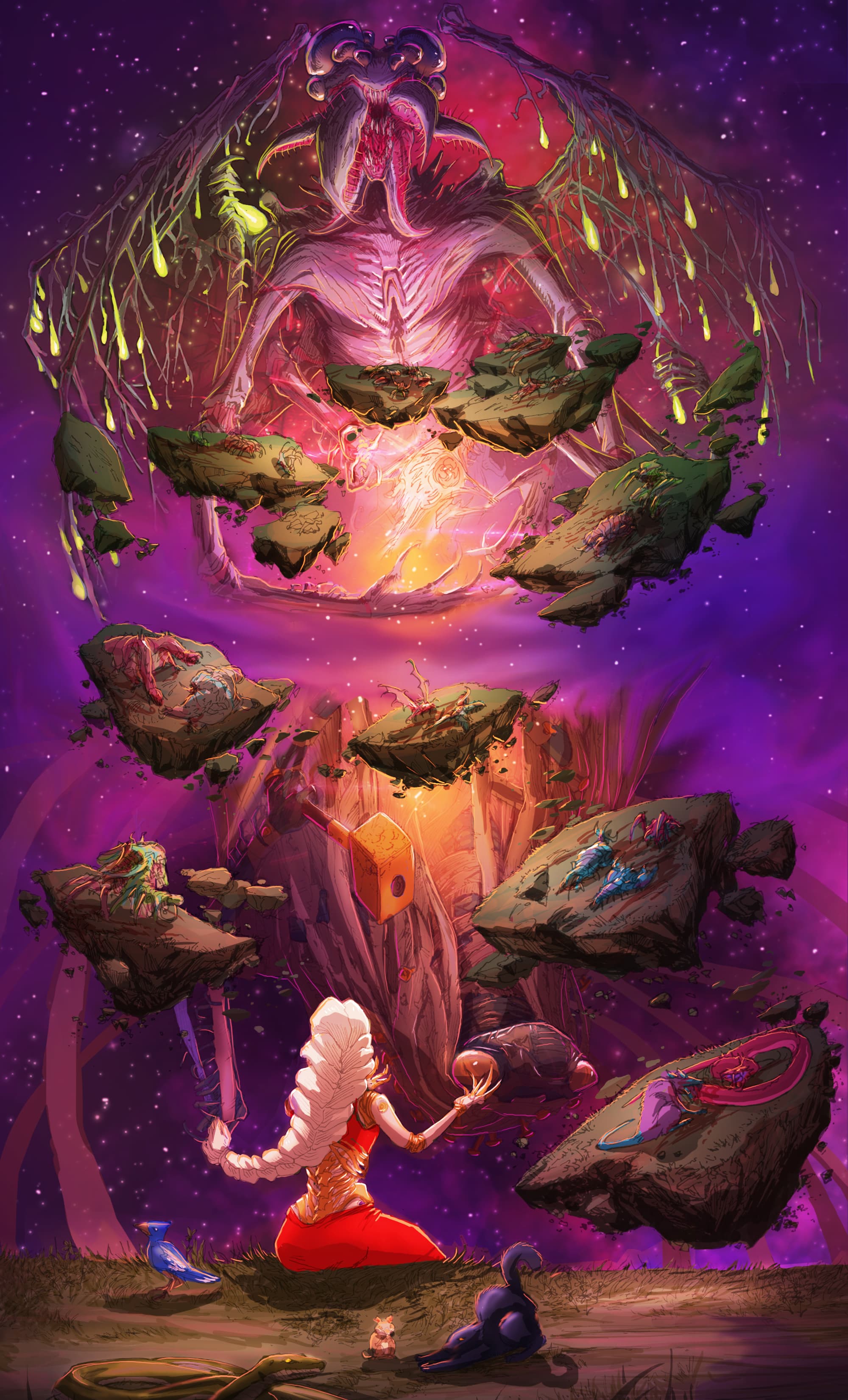Gooday everyone,
Welcome to the Deacon Corner. If you’re new here, these galleries dive into the inspirations behind the images you’ll find throughout the books posted on these pages. In these issues, I also like to share the commission details for each project, so readers can follow along with how these images came to life.
If there’s a particular piece you’re curious about, you can find all previous issues under my journal entries or linked directly beneath the images within each chapter.
Now before we begin, none of these beautiful art pieces would exist without the incredible talent of Sickjoe who is the creative force behind all the artwork in these books. Quite literally the heart and soul of this visual world. If you appreciate his work as much as I do, I encourage you to visit his gallery and explore more of his stunning creations.
Now, without further ado, let's take a look at the featured image and the commission details below.

For this one, I thought I'd have you do something on the primordial gods Daedalus and Iapyx, the dukes of the material and immaterial realms. These two are the firstborn children of the Great Devourer and live within the core of a violent nebula.
At the beginning of the mortal timelines, there were hundreds of peninsulas, land masses without a body that drifted in the vastness of space, filling the empty void. These chunks of dirt and rock were populated by violent nasty things with teeth and claws, the first creations of Daedalus’s primordial kiln.
Daedalus: He bears a striking resemblance to the engineers and has forged a flesh-born kiln from the broiling colorful gases of the nebulae where he shapes horrific lifeforms to compete, survival of the fittest. However, unlike Icarus, Daedalus has wings, featherless and desiccated like the branches of a wilting tree, bat wings without membranes with strange organ-filled fruits dangling from the limb’s finger-like projections which he plucks to use in his creations. Daedalus is obsessed with war and strength, granting his creations thirst and hunger always to be driven by their base instincts. He has many arms and fingers and is shaping clay into tooth, claw, and stomach, completely drawn into his work.
Iapyx: He is the opposite of his brother, drawn more towards heavy cumbersome elements like iron and communing with immaterial unseen things. Using his half of the nebula, he crafts mortal fate into long flowing tapestries that he nails to his back with copper, nickel, and brass concealing much of his body. These stakes are hammered painfully and unevenly into his flesh. He did the work himself and struggled to reach the places where he drove the nails. Think of it almost like an act of penance, shunning his own flesh.
Like his brother, he has many arms and fingers but shapes metal and fabric instead of flesh and blood. The tapestries of fate that cover his body differ from what the sisters of fate shape. These tapestries are tattered with a chimeric display of unusual stitchwork across their surface, a pattern only a true fate weaver would understand. Imagine these fates to be like torn scrolls with stitchwork, unrolled and nailed against his back, sides, and shoulders.
Beneath a tattered cowl, we can see his head, which resembles the face of a cicada. An insect that I always felt resembled an organic machine—a perfect representation of the young duke who values metal and cloth over flesh.
Background: This is where things get a little crazy (if they aren’t already). The brothers reside within a nebula like the pillars of creation, shaping the colorful ionized elements to suit their needs. Daedalus makes a fleshy kiln and designs unspeakable horrors while Iapyx uses his half to shape fate into those tattered tapestries. All around them are the floating peninsulas. Chunks of land drifting in the vastness of space. The suspended islands closest to the primordial kiln harbor the most violent of Daedalus’s creations, ripping each other to shreds in a perpetual cycle of violence, eventually returning to the kiln where the strongest are reshaped, their properties shared with the next generation. However, as we get further away from the kiln and closer to the bottom of the piece, we see reptiles and birds, animals that might be familiar to us. At the very bottom, on an island separate from the rest, lives Adelaide, the first of womankind.
Adelaide: She is essentially the Eve of this story. Adelaide is a woman with long golden hair, beloved by all the creatures who walk and crawl. She admires Daedalus and his primordial kiln, praying for a kiln of her own so that she might conceive life with passion and love, not violence. However, Daedalus ignores her pleas as he sees no value in soft, beautiful things without stingers, talons, and claws. Ultimately, it is Iapyx and not Daedalus who pities her and grants her wish. The sisters of fate, in many ways, resemble Adelaide, and I want to imply through this piece that it is Adelaide Iapyx sought to replicate when he crafted his daughters—an unrequited love, so to speak.
I envision this piece being like many of the old biblical artworks of creation and the Garden of Eden, demonstrating the vastness of space, the immense power of the firstborn children Daedalus and Iapyx, and how tiny and fragile mortal life is compared to their whims. Adelaide is on her knees praying to the horizon where we can see distant islands and two cosmic deities weighing the measure of mortal life, flesh, and fate.